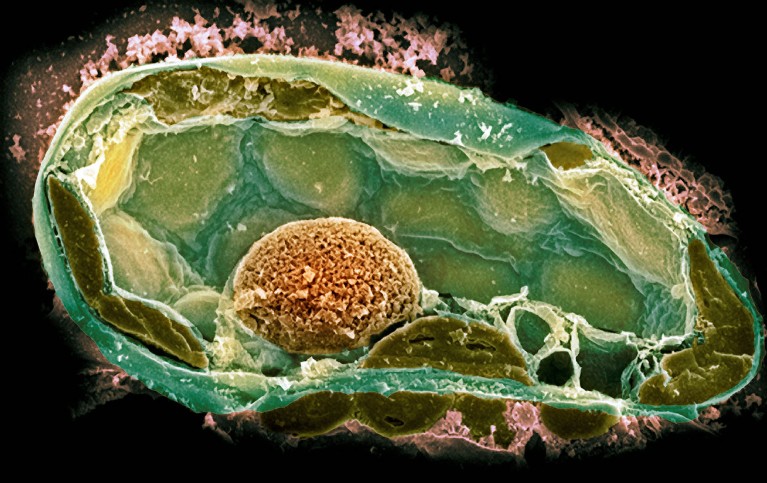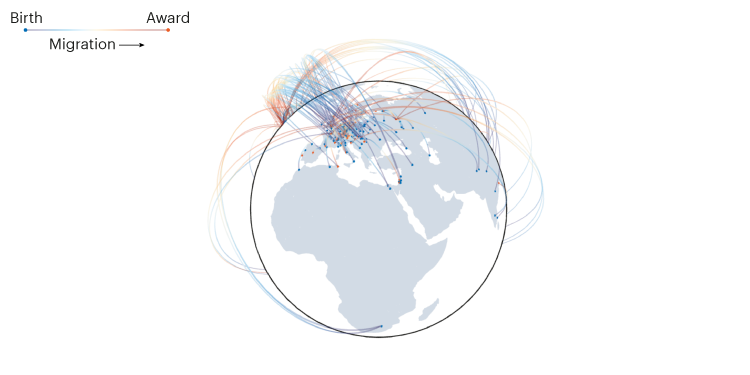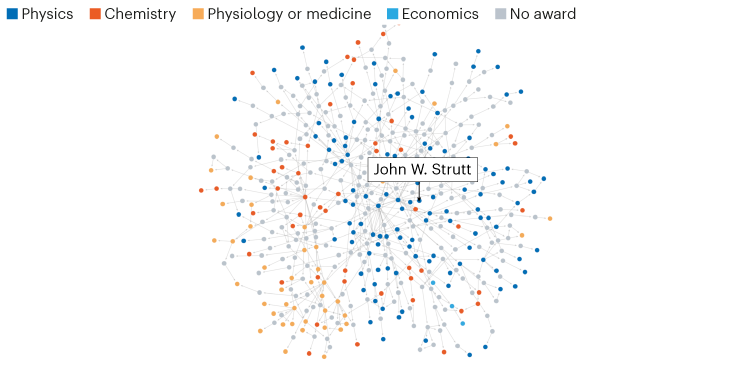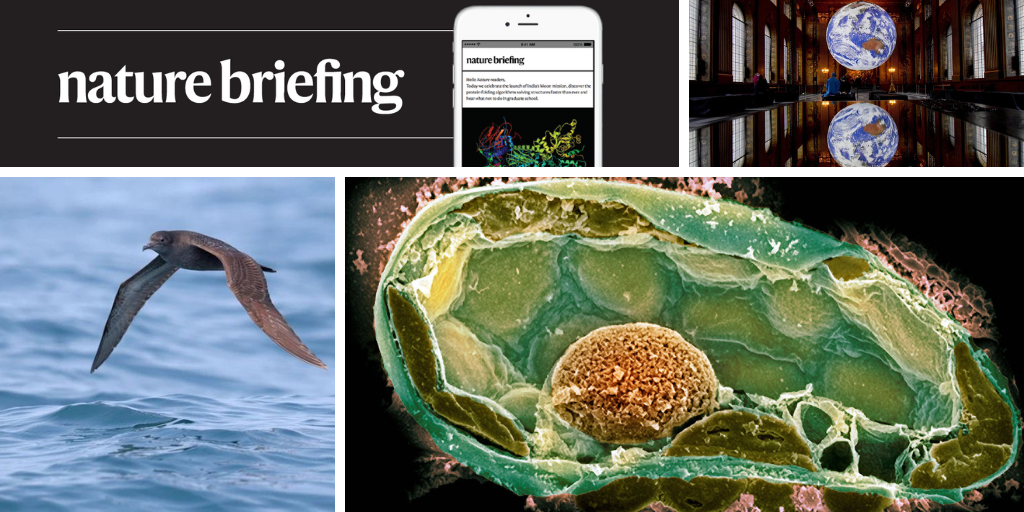Hello Nature readers, would you like to get this Briefing in your inbox free every day? Sign up here.

A plant cell containing chloroplasts (dark green) — specialized organelles that scientists think evolved from endosymbionts.Credit: Dr David Furness, Keele University/SPL
With a tiny hollow needle and a bicycle pump, scientists have successfully kick-started an artificial endosymbiotic relationship by implanting bacteria into a fungus cell. These relationships, in which a microbial partner lives harmoniously within the cells of another organism, are thought to be what sparked the evolution of complex life. The systems could help researchers to understand how cell structures such as mitochondria and chloroplasts emerged more than a billion years ago. Researchers recreated a natural symbiosis by implanting the bacterium Mycetohabitans rhizoxinica into the fungus Rhizopus microsporus. When spores germinated, bacteria were also present in the cells of the next generation of fungi, showing that the endosymbiosis could be passed onto offspring.
While the US faces a massive outbreak of a highly pathogenic strain of H5N1 avian influenza in cattle, Australia and the rest of Oceania remains untouched by the disease. Why animals in the southern region have so far escaped infection is a mystery, but scientists have suggested that it could be because of the region’s geographical isolation or because many of its bird species don’t migrate to places where the virus is present. But virologist Michelle Wille warns that the arrival of the virus is “a matter of when, not if”.
How to win a Nobel prize
The Nobel prize has been awarded in three scientific fields — chemistry, physics and physiology or medicine — almost every year since 1901, barring some disruptions mostly due to wars. Nature crunched the data on the 346 prizes and their 646 winners (Nobel prizes can be shared by up to three people) to work out which characteristics can be reliably linked to medals.

Source: nobelprize.org
Just ten awardees hail from low- and lower-middle-income countries, and most of this small group of winners had moved to North America or Europe by the time they were given their prize. To give yourself the best chance of winning a Nobel, you should ideally be born in North America and stay there.

Source: Ref 2
You can greatly improve your chances of winning a Nobel by working in the laboratory of a scientist who already has one or will in the future, or by working with someone whose mentors won. John W. Strutt, who won a physics prize in 1904 for his work on the properties of gases, has 228 academic descendants with the prize — his students, their students and so on. Sometimes there are gaps between laureates, but they are still connected.
Features & opinion
A new biography of the chemist who proposed the Gaia hypothesis, James Lovelock, doesn’t pull its punches about his contradictions, writes reviewer Emma Marris. Environmental journalist Jonathan Watts writes that — despite his idea becoming a touchstone for environmentalists — Lovelock spent most of his career working as a consultant for oil companies and industry, which were initially enthusiastic about the idea of Earth as a single living thing that could absorb any abuse meted out to it. And when it came to politics, Lovelock himself “was either too naive, too conservative or too lacking in confidence to do anything but defend the status quo”.
A nameless girl discovers her poetic talents during her final hours in the latest short story for Nature’s Futures series.
Physicists have discovered a new form of γ-ray radiation that emerges from tropical thunderstorms and could shed light on the centuries-old question of what initiates lightning. To do it, a team of physicists needed to get their hands on a special kind of aircraft owned by NASA, a plan four years in the making. “What’s special about the ER2 is that it can fly at 20 kilometres, which is above even the high convective thunderclouds,” says physicist and team member Nikolai Østgaard. “That was the goal. To get as close as possible without going into the thundercloud.”
Nature Podcast | 30 min listen
Subscribe to the Nature Podcast on Apple Podcasts, Spotify or YouTube Music, or use the RSS feed.
Today, Leif Penguinson is buzzing with excitement while hiding near Bee Falls in Madhya Pradesh, India. Can you find the penguin?
The answer will be in Monday’s e-mail, all thanks to Briefing photo editor and penguin wrangler Tom Houghton.
This newsletter is always evolving — tell us what you think! Please send your feedback to [email protected].
Flora Graham, senior editor, Nature Briefing
With contributions by Jacob Smith
Want more? Sign up to our other free Nature Briefing newsletters:
• Nature Briefing: Careers — insights, advice and award-winning journalism to help you optimize your working life
• Nature Briefing: Microbiology — the most abundant living entities on our planet — microorganisms — and the role they play in health, the environment and food systems.
• Nature Briefing: Anthropocene — climate change, biodiversity, sustainability and geoengineering
• Nature Briefing: AI & Robotics — 100% written by humans, of course
• Nature Briefing: Cancer — a weekly newsletter written with cancer researchers in mind
• Nature Briefing: Translational Research — covers biotechnology, drug discovery and pharma


